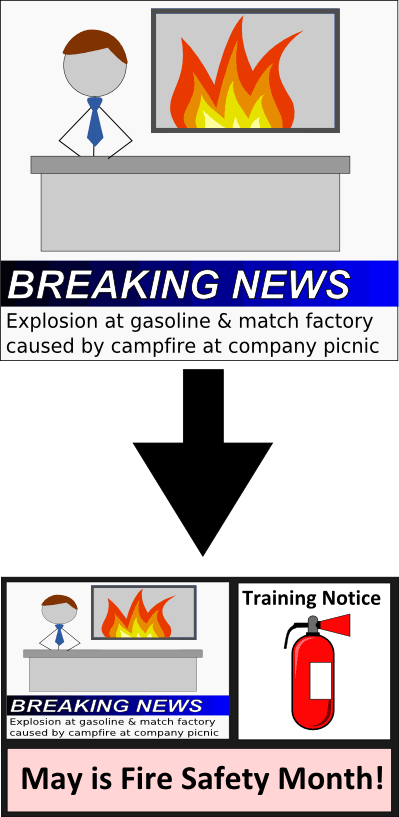Newsjacking: Making the news work for you
There's a popular seafood restaurant in the little beach town where I live. For whatever reason, the restaurant has adopted a strategy where they send out a constant barrage of email newsletters. Interestingly, though, they're almost never annoying (and never spammy) because they do an outstanding job of taking important events happening in the world and making them relevant to the pitch. For example: the prolonged La Nina system caused a mild winter which impacted tuna migration patterns, so we're running a special to celebrate! (I'm not kidding, that was a real deal, though theirs was much more elegantly worded than mine.)
The restaurant basically mastered the practice of newsjacking, or taking some well-known current event and connecting it to a promotion or other message. The term was popularized in David Meerman Scott's book Newsjacking: How to Inject your Ideas into a Breaking News Story and Generate Tons of Media Coverage, but ask any blogger and we'll tell you the practice was popular on the Internet long before the book came out. After all, it's a lot easier to talk about somebody else's idea than to think up one yourself :)
Here's a quick illustration of how this might work in a corporate communications situation:

As you can imagine, effective newsjacking relies on your ability to select the right content and draw a meaningful connection to the message you want to send to your viewers. But when properly done, it's a powerful and not particularly difficult way to add a steady flow of relevant content that people will actually want to pay attention to.
Earned media: Cashing in on the interests of the crowd
If newsjacking is about creating a connection to someone else's story, then earned media is about basking in its reflected glow. Earned media refers to word-of-mouth communications, conversations, and general buzz about your brand or organization. So, for example, if I wanted to advertise WireSpring I could go with "bought media" and purchase some Google AdWords, or put an ad in a trade magazine. I could also take stock of our "owned media," and spruce up our website, build out some vertical-specific microsites, and so on. And finally, I could complete the trifecta and engage my "earned media" by writing some really awesome blog content, mentioning it to my friends and colleagues via social media, and hoping that they then repost, comment, tweet, etc. -- continually pushing it out to larger and larger audiences (hint, hint).
It's unlikely that you'll create much earned media from scratch on your digital signs. But your screens can make for a great earned media viewing spot, which lets you bring the hard-won popularity of your content back home. For example, suppose your chain of auto parts stores made up a video featuring a well-known NASCAR driver doing something entertaining -- say racing against a go-kart souped up with your premium auto parts. Well-promoted, the video might have become popular on social networking sites and video sharing sites, and might even have developed a loyal fan base. Now that it has some buzz, you can bring it back in-house as part of a digital signage campaign that runs in your employee break rooms, thus connecting outside marketing to internal communications. Employees already familiar with the content will find it immediately recognizable (making it easy for the rest of your message to get across), and those unfamiliar with it will absorb a new piece of corporate culture.
Creating a more engaged audience
Your viewers aren't viewers if they're not looking at your screens. They're not an audience if they don't even notice your content. You therefore have to pull out all the stops day after day to find ways of teasing, enticing and cajoling casual passers-by into becoming engaged viewers. While developing new, medium-specific content can be very effective, it can also be complex, expensive, and unreliable. Tapping into the collective consciousness with practices like newsjacking and earned media provides you with the option of giving your audience something that you more or less know they'll be interested in, regardless of whether you deliver your own messages on the backs of those stories or simply use them to entice viewers to watch in the first place.
Do you have any good examples of digital signage networks using newsjacking or earned media to boost viewership or engagement? Leave a comment and let us know!

 Subscribe to the Digital Signage Insider RSS feed
Subscribe to the Digital Signage Insider RSS feed
Comments
RSS feed for comments to this post